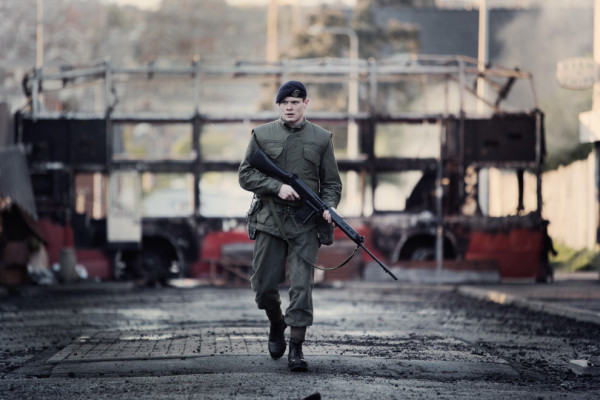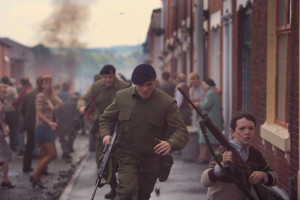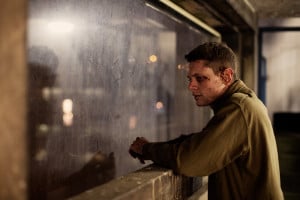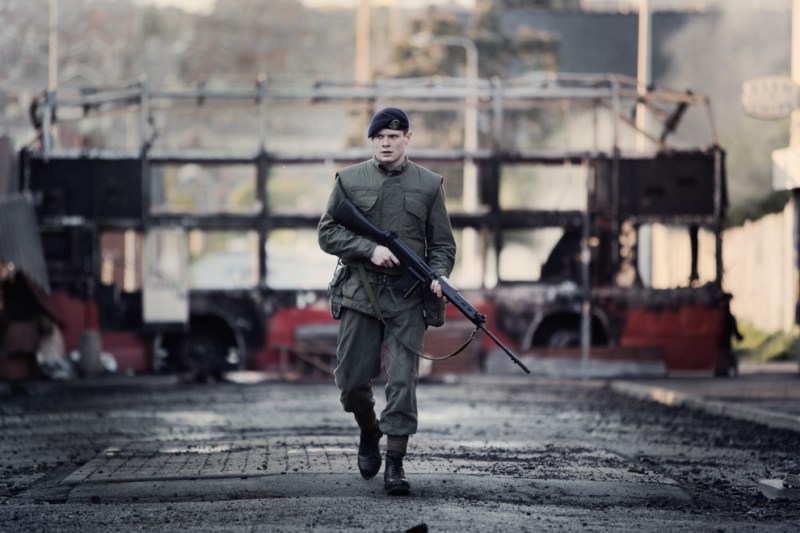
There’s a fine line between friend and foe in the midst of a revolution. First-time director Yann Demange’s “’71” explores this tenuous boundary in the time of the Troubles — a period of ethno-nationalist unrest in Northern Ireland.
It’s 1971, a year before Bloody Sunday, when Gary Hook (Jack O’Connell, “Unbroken”) joins the Parachute Regiment of the English army. His unit is assigned to patrol in Belfast, a veritable hornet’s nest of IRA activity and paramilitary unrest.
Hook, green in the ways of revolution, is separated from the rest of his regiment when a house-to-house search in Belfast goes awry. The ostensibly peaceful routine operation devolves into an all-out riot: Townspeople lob rocks at the troops, women bang trash can lids together in an attempt to drive the English from the streets, children, even, do their part — small sacks of human waste first disgust, then infuriate, the regiment.

Lost behind enemy lines, Hook is at the mercy of the townspeople who happen upon him. He’s handed from hostile resistance forces to informers to a kindly doctor and back again. The uncertainty of identity — friend or foe? Informant or militant? — keeps Hook on the run. Along the way, he’s bruised and beaten to a pulp (O’Connell spends the majority of the film with a painful limp). The confusion of his back-and-forth culminates in a shootout between army and resistance forces. By the end of “’71,” the unseasoned soldier of the film’s opening moments is hardened, bloodied, a single night in Belfast his trial by fire.
“’71” is a beautiful film for its shadows, colors and dramatic angles. By night, Demange’s Belfast is a landscape of lurid greens, browns and yellows. After a bomb blast flattens a local bar, Hook, silhouetted, staggers away from the scene. He’s backgrounded by smoke and the unsettling yellow light of flames, and the camera doesn’t leave his darkened face for a moment. Demange settles on a low angle shot so that Hook looms ominously in the frame as he falters down a flight of stairs. He’s so heavily shadowed that it’s unclear how far or near he is from the camera — as the audience sees him, he’s a bobbing, spectral presence. When Hook is finally illuminated, his face is vacant, his cheeks blood-strewn, and the audience’s disorientation is complete — the back alleys of Belfast might very well be the stomping grounds of Frankenstein’s monster.

It’s with these kinds of waking nightmares that Demange creates a mood that’s at once surreal and urgent — too urgent, at times. For the first half of “’71,” the film’s pacing establishes an atmosphere of muted chaos. The confusion of the daytime riot is well-paced, as is Hook’s odyssey through the streets of Belfast. As Demange prepares us for the film’s climactic shootout, however, there’s a sense of action hustled to its logical end. There’s a confusion of gunfire as the British military clashes with Irish resistance forces. Demange lingers for a moment, on a young civilian’s hesitation to execute Hook. The boy’s delay results in his own demise — the audience feels the pang of his loss. Otherwise, however, it’s a rushed and unsatisfying ending.
The rushed climax is redeemed by Hook’s reunion with his younger brother, Darren (Harry Verity). O’Connell, who performs in the capacity of an action star for the majority of “’71,” is finally allowed to halt the chase and emote.
O’Connell’s performance is the lynchpin of “’71”. Even as Hook limps through the streets of Belfast, he communicates by way of a pained look or the list of his stride. Here’s the lost look of a young soldier deep within enemy lines, of a Brit who feels duty-bound to loathe his Irish counterparts despite the ministrations of a kindly Irish doctor. O’Connell’s fine-tuning adds depth and color to a taut, fast-paced film. For all the chaos of the Troubles, O’Connell provides “’71” with a moving, reliable emotional center.
“‘71” opens March 13 in San Francisco, Berkeley and Marin.
Contact Madelyne Xiao at madelyne ‘at’ stanford.edu.
